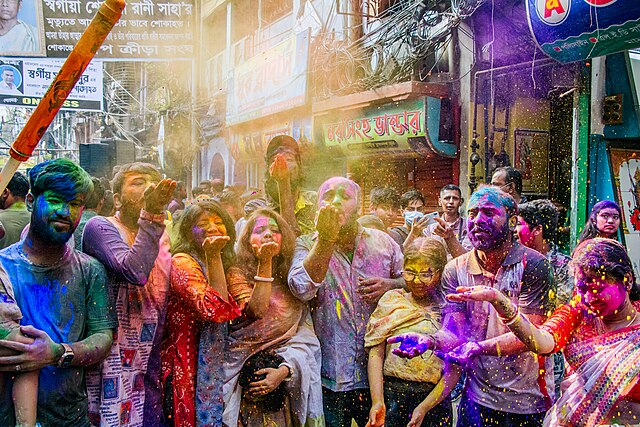The Intimacy of Sight in Worship - Darśan: Seeing the Divine Image in India
The Intimacy of Sight in Worship
By: Bridget Dresser
 |
| Celebrating the Hindu festival Holi |
It is said that the eyes are the window to the soul, and this couldn't be truer for the practice of darśan, meaning “to see” in Sanskrit. As Diane Eck describes it in her book, Darśan: Seeing the Divine Image in India, the act of darśan in the Hinduist practice is done “to stand in the presence of the deity and behold the image with one’s own eyes, to see and be seen by the deity.” (Eck) This act of intimacy between deity and devotee is a voluntary act of vulnerability and submission on the part of the worshipper. This practice isn’t a one-sided or sacrificial act of devotion either, as the worshipper is taking time to indulge in the senses and take in the beauty of their murti, and the sensory aspects of the offerings and rituals the for their deity.
In most monotheistic religions, God is omniscient and that is supposed to reinforce the power dynamic between deity and worshipper. God can watch you and keep a tally of everything you do that makes him upset throughout the course of your life, but you cannot see him until he judges how you lived your life once you die. The sensory relationship between these singular God’s and their followers is seemingly very one-sided except for the occasional miracle or “6th sense” experience. However, when these types of events do occur the impact is tenfold because of the “mysterious” nature people assign to God and “his plan.”
At least in the case of more orthodox Christianity, there is a distinctly controlled level of sensory experience in every-day or weekly ritual, as one of the main themes of those forms of Christianity is to practice self-control and to refrain from indulgence. Meanwhile, Hindu practices and festivals such as Holi (pictured above), are meant to be an explosion of sensation from every direction as a celebration of creation, triumph, and the splendor of their pantheon.
So why is there such a different “vibe” when talking about being watched or seen by monotheistic God and Hindu deities? I argue that the practice of darśan and puja creates a more intimate relationship between deity and follower. Seeing and being seen creates intimacy between two beings, and taking time to build your personal relationship with a deity through sensory input and experience can deepen the spiritual experience of any ritual.



Comments
Post a Comment